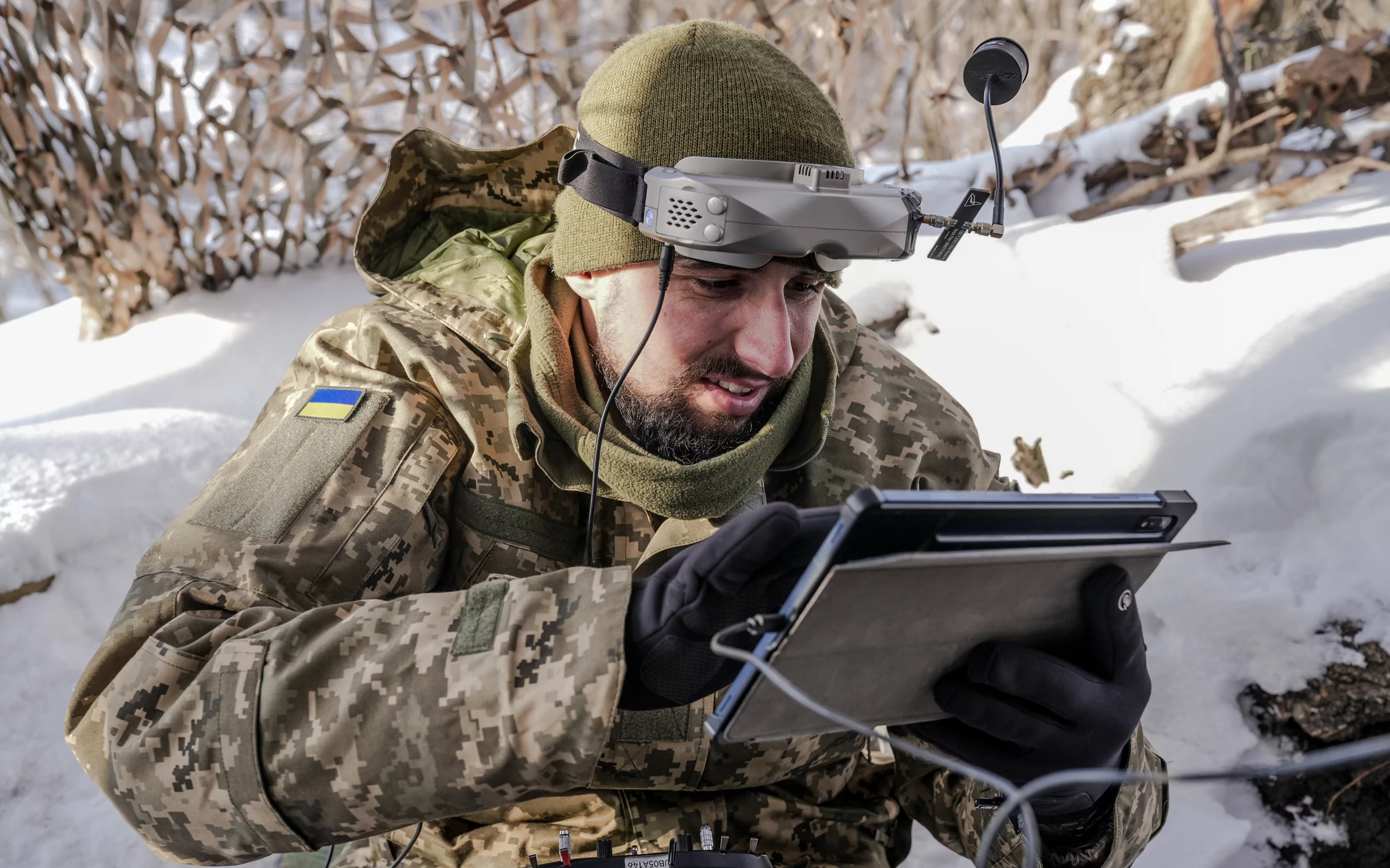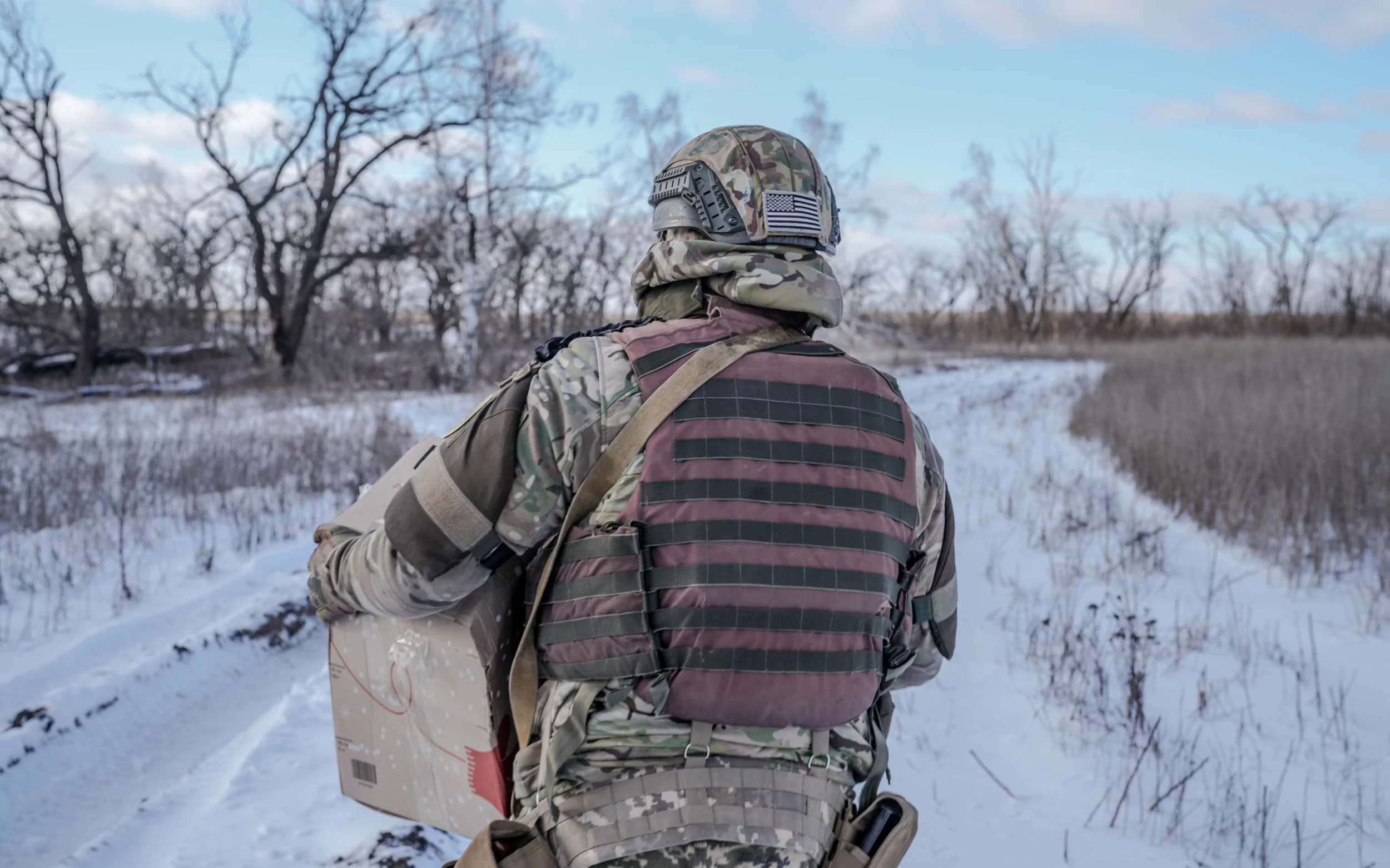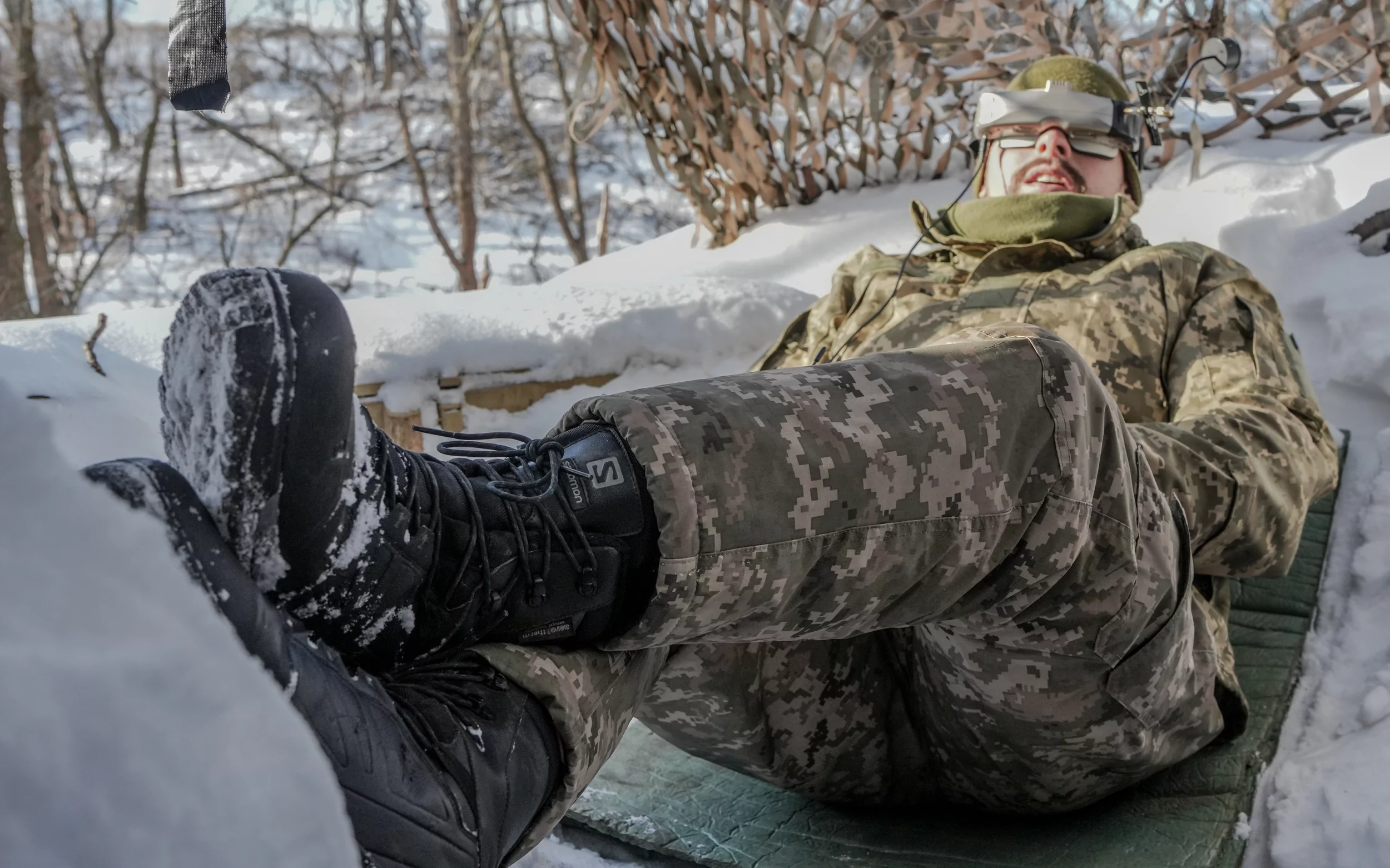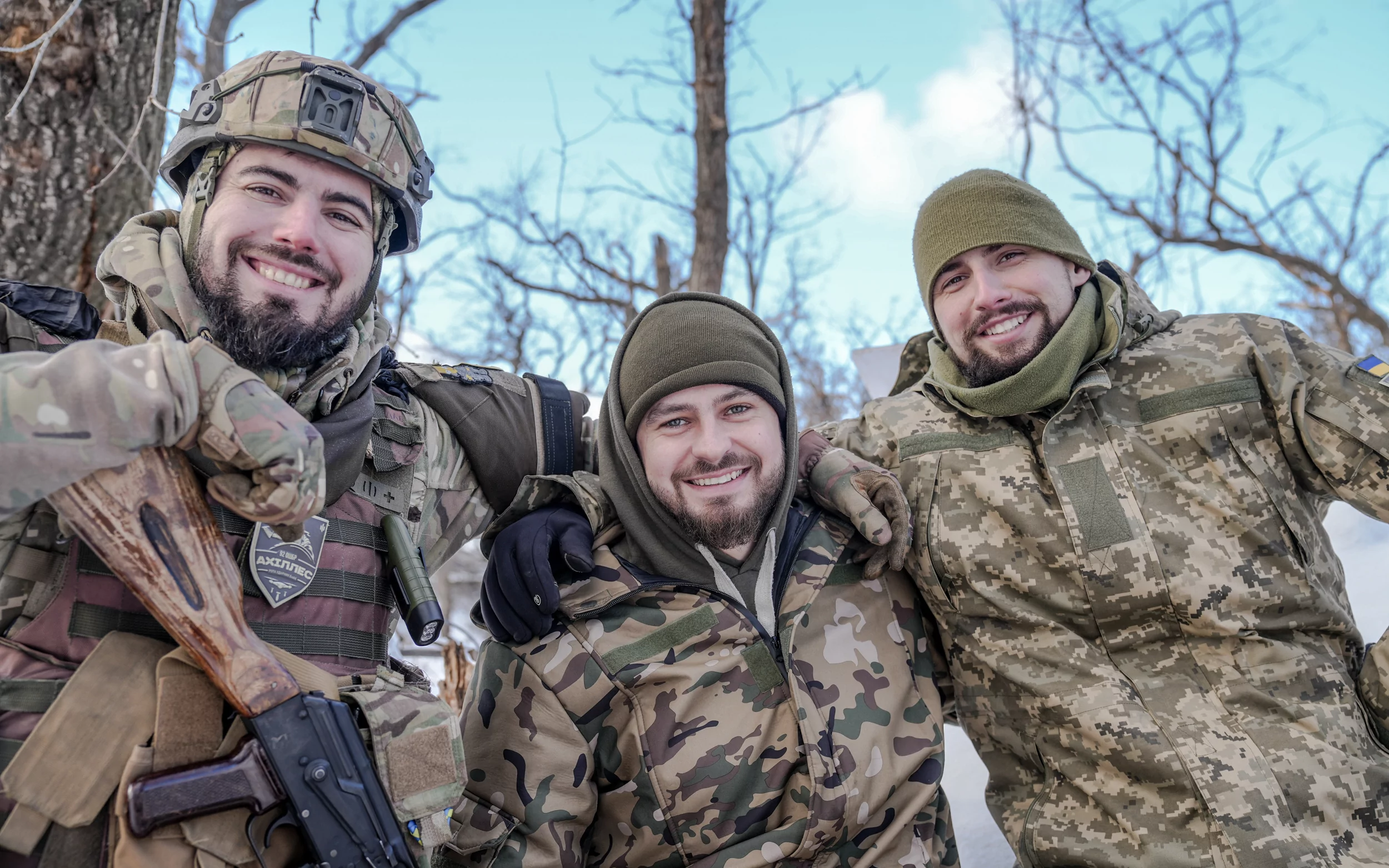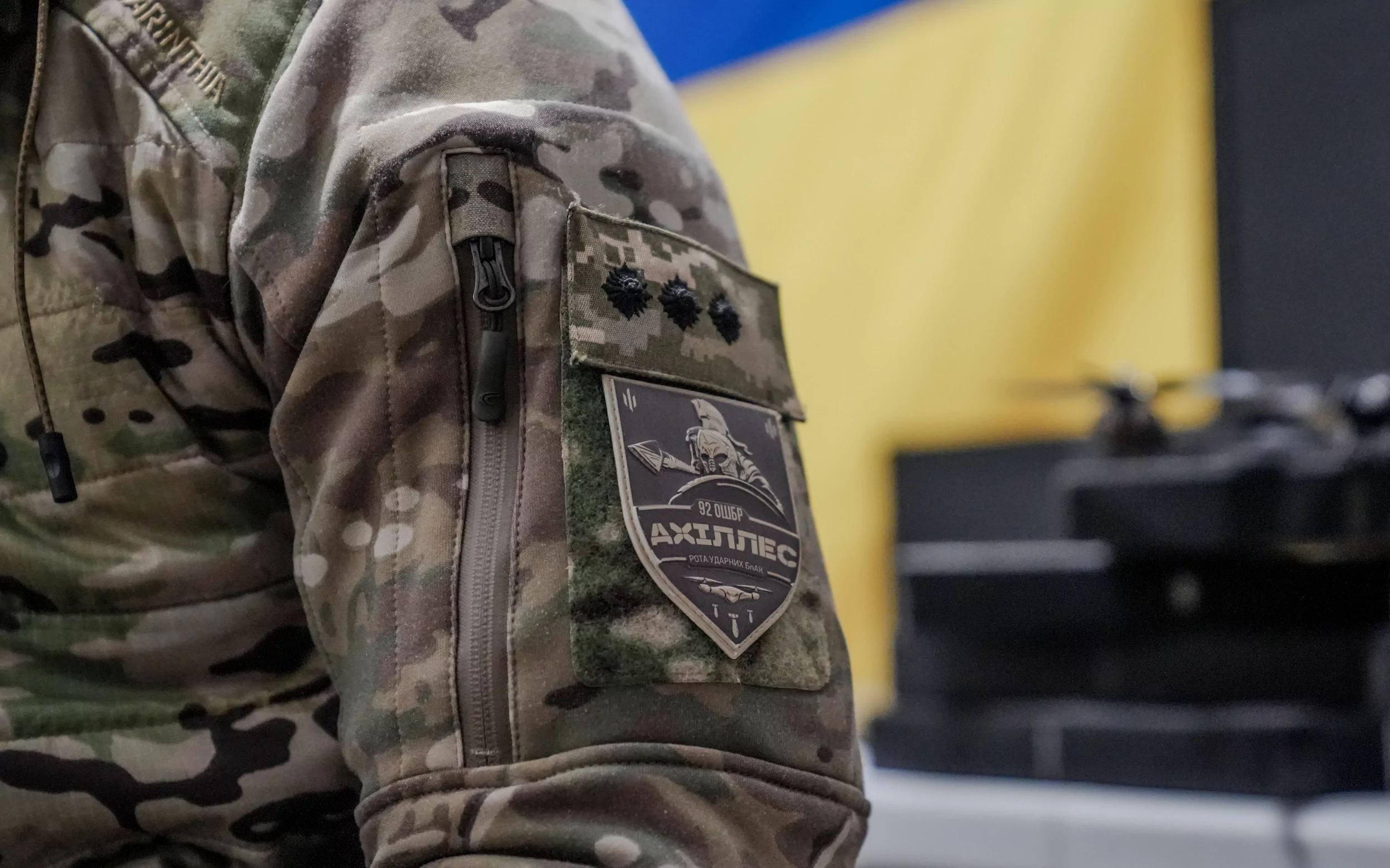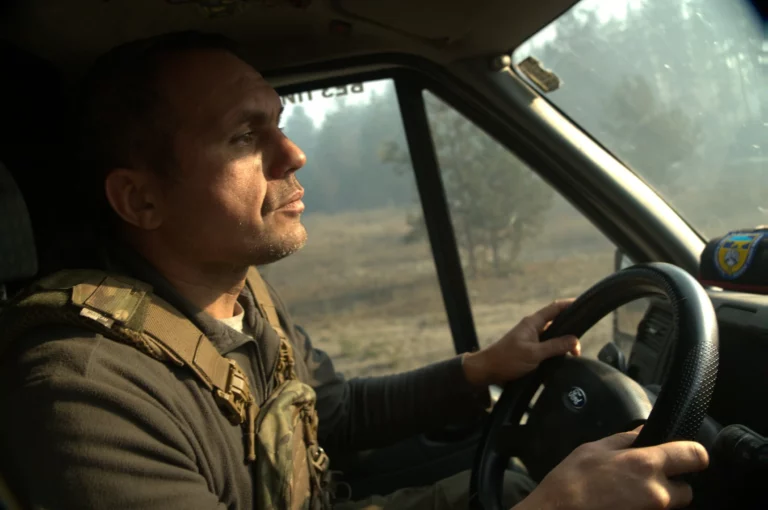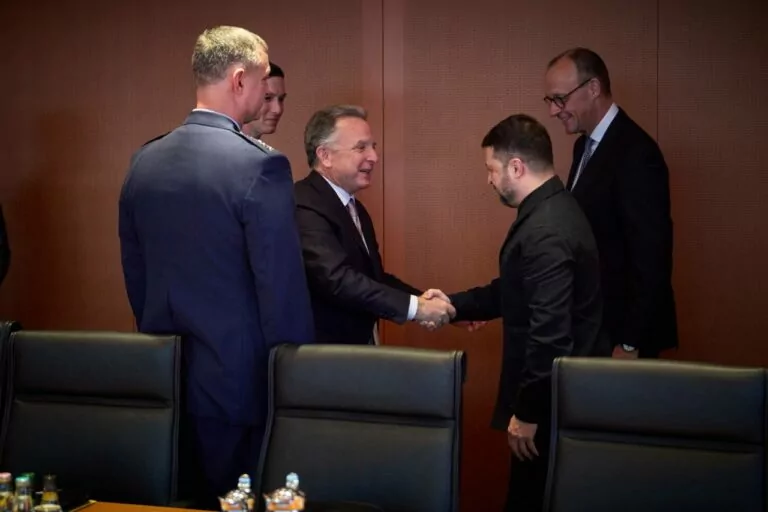The Ukrainian army introduced first-person view (FPV) drones to combat. While some military commanders were skeptical about using drones as a serious weapon, the army used them more and more. Often, in circumstances of shell hunger, soldiers used drones to repel Russian advances. Some brigades formed attack drone companies; the 92nd Assault Brigade was among them. The company is led by the former politician and an assault trooper, Yurii Fedorenko, with a call sign Achilles.
Later, interest in Ukraine’s domestic drone development increased. At the end of January 2024, Yurii’s company grew into a separate battalion under the 92nd, named “Achilles” in his honor.
Gwara Media journalists visited the unit back when it was a company, to find out how pilots of FPV drones work.
Volunteers
Despite the freezing -20°C hitting Ukraine’s east in the second part of January, the weather is nice for FPV piloting. Off-road vehicle of “Achilles” flies on the frozen soil. Cars with white crosses painted on them move towards us, their drivers eyeing us suspiciously, wondering whether we’re friends or foes.
Rare bushes and fields, overgrown with weeds, blink behind the car’s windows. Spoil tips, snow-white, stand motionless. Rusty remains of military equipment lay at the roadside.
Chief Sergeant Yangrr is in the driver’s seat. Beside him is Achilles, the company’s commander.
His unit was formed from volunteers of the Kyiv territorial defense forces. They went through combat in the Zhytomyr region, fought near the capital. Then, the unit was transferred to the Kharkiv oblast, under the care of the 92nd brigade, officially joining just before the Kharkiv counteroffensive in September 2022.
Soldiers of “Achilles” do reconnaissance and artillery correction via FPV drones.
“At the brigade meetings, I heard one of the commanders tell his subordinates, ‘You’re doing things wrong, you have to work like “Achilles.” People know what they’re doing there. Are you lesser soldiers than them?’ He praised us but scolded others. I sat and thought, ‘Damn, my people. My people really know their thing.’ It’s the best kind of acknowledgment,” Achilles laughs.
Yangrr points out that the unit almost doesn’t have issues with fighters’ motivation. Ninety percent of the people working there consciously join “Achilles,” knowing where they’ll go and what they’ll be doing.
“Achilles” fighters try to promote their unit, to attract motivated volunteers. Yangrr hopes people in their company won’t be saying, “I wasn’t born for that [kind of work]” or “I didn’t come here for that.” Demotivation like this, in his opinion, kills the Armed Forces. “Everyone can feel fear, that’s normal. But uncontrolled fear leads to death.”
Bakhmut axis
“Achilles” works on the Bakhmut axis. The additional package of drones for a combat unit is stored in the car.
“[We’re using] more drones because of the good weather, that’s why we’re bringing them more FPVs and ammunition. It has to be enough for the evening,” commander says.
“How often do your combat units work?” my colleague asks. Achilles laughs.
“Our reconnaissance drones, FPV drones for daylight, and night-vision bombers work constantly now. Even when the weather is bad.”
FPV-pilots’ work directly depends on the weather. During the winter, drones can stay in the air less, travel less distance. Pilots lose them more often because of rain and snow.
Despite that, “Achilles” is always ready for combat: the weather can change at any moment.
We arrive at the positions. Explosions. Three kilometers separate this location from Russian positions. Yangrr parks in between naked tree trunks. Soldiers jump out of the car and get cardboard boxes with drones and explosives from the trunk.
I walk on the slippery, ice-covered road, following Achilles. Explosions, again. The bulletproof vest squeezes my lungs.
“Sometimes, infantry walk 5-6 kilometers to combat positions carrying 50-60 kilograms on themselves. Tell me they aren’t made of steel.”
— Achilles
A rusty foundation of a power line stands in the field. Explosions, explosions. A Ukrainian “bird,” an FPV-drone, buzzes in the sky.
We enter the dugout following Yurii. “Shabbat is at it again,” Yurii comments, noticing the absence of a drone operator, who, apparently, decided to do another assignment.
We find Shabbat lying in the snow, with one leg over the other. He wears goggles, holds a controller in his hands. Calvados stands behind him. He manages the combat unit: directs the pilot’s flight path, talks to intelligence and the command center. Just now, he’s spotted a Russian drone.
“The fucker is flying. Hi,” Calvados puts down the glasses and notices us. Says towards Shabbat, “Look, he wants to approach the target.”
“That’s our position,” Shabbat jokes.
“He targets the bushes,” counters Calvados. “What the fuck are you talking about, our position? Ah, he hit the damn tree.”
“Good riddance,” Shabbat takes off the goggles as well.
“Did you see that? What an idiot,” Calvados laughs and addresses us. “Apologies for my rude language.”
Shabbat takes over a new drone and flies toward his target, a Russian anti-tank guided missile.
“Daylight” combat units of “Achilles” work from sunset to sundown. During a shift, one pilot conducts 15-20 combat flights. When the weather is cold, soldiers try to go to the dugout frequently, to warm up.
We ask the pilot, “Can we talk to you?”
“I’m focusing, but I think I can talk.”
“How long are you at war already?”
“Since February 24, 2022, and without rotation for now. Because there’s no one to replace me. Those who will be watching this video don’t want to go to war. We need to teach people, so they’d have a good skill level. But no one wants to join.”
You have to be good with your hands to learn how to pilot FPV drones, Shabbat says. If a person is skilled, to achieve good results, they’ll need about 3-4 months of constant piloting of combat drones. That’ll allow a pilot to go through all kinds of weather conditions, test different kinds of ammunition and different kinds of drones on various targets.
“If mobilization is announced now, they’ll need time to get enough people and teach them to fly. Sadly, for now, we lack time, drones, and munitions,” Shabbat says. “That’s why it’s necessary to choose the best and quickly teach them how to work in teams to get results.”
The most expensive target Shabbat hit during his piloting career was Strela-10 [Soviet-made highly mobile, short-range surface-to-air missile system, worth $3-4 million — ed]. During his time leading the combat unit, he managed to destroy Tor [surface-to-air missile system designed worth $25 million — ed.]
“Drone that costs $500 can hit equipment worth up to $1,5 million.”
— Shabbat
“Is that it? Can we start?” A pilot interrupts our conversation, addressing Calvados.
“Yes, it’s PTUR [anti-tank guided missile — ed.]. Let’s work, we have sight on it.”
Borchick passes us by. He prepares another FPV drone for flying out, attaches a munition to it. The soldier transferred to “Achilles” three months ago. He says, they have a lot of work, something is always happening — there’s no boredom here.
“I consider FPV drones the coolest, most accurate weapons.”
— Borchik
Borchik says that, on their axis, the situation is more or less okay — thanks to drones, the battalion managed to drive the Russian troops far away. They don’t approach “Achilles”‘ positions, but the neighboring units face a more complex situation.
“We’re trying to work until the stones fall from the sky. Today, our combat unit managed to down an anti-tank missile and hit the enemy’s shelter. Perhaps we even hit the tank. Or not “perhaps,” we hit it. There was an explosion,” Calvados is looking at the tablet. “That, I’ll send to the command center, so they’d look at [the footage] in detail. Check if that was tanks or crafty Russians crafted a decoy.”
Few capable hands
“When you see the video from that anti-tank missile, you’ll laugh,” Calvados says to the command center, “It feels like we downed an FPV.”
Shabbat completes the flight. Comes to Calvados and asks for a photo of a “fallen PTUR.”
Pilot says Russians are copying technology fast. They’ve already set up mass production of FPV drones. So far, they can’t operate them well, but they will become good at it in two months, just like Ukrainian troops. For Russians, the number of FPVs will be higher, so will their efficiency in combat, Shabbat believes.
“Our people laugh at Russians closing a bread-making factory and setting up drone production instead. But why not?”
— Shabbat
Russians also have a lot of tools for electronic warfare, and that’s a problem, the pilot adds. But if Ukraine finds experts in this field and creates an effective team on the state level, solutions can be found. Because it’s a constant fight: Ukrainian military [finds methods to] surpass Russian electronic warfare, Russians find ways to resist these methods, Shabbat says.
Calvados adds that Russians sometimes target the position of Ukrainian FPV combat units. “Just recently, we couldn’t evacuate two guys because of intense shelling.”
“They have a more saturated market. Everyone knows they have more opportunities but fewer capable hands. That is probably what saves us for now—that they aren’t that advanced in these matters,” Calvados laughs. “At some point, we hit them with our drone and caught footage from theirs: he literally flew for two kilometers and hit the tree. Let’s hope they’ll keep being like that.”
Soviet rudiments
The sun has already passed the zenith. It’s time to come back to the command center. I photograph Achilles, Shabbat, and Calvados to capture the memory.
“You can see who’s an assault trooper and who’s a lazy-ass pilot,” Yangrr grins, watching his colleagues pose for the photo.
“It’s frozen a bit. It happens,” Yangrr laughs when the commander pulls the car’s door handle, and nothing happens. “You should open it from the inside.”
“Oh, you dear Augustin, Augustin, Augustin,” Achilles sits in the car, his helmet brushing the headliner, and tells us, “Yangrr is probably the most experienced of all drivers in our unit. We’ve been on such interesting roads together.”
“Every time you praise me, we get into some mess,” the sergeant says, starting the car. Car jerks. We’re stuck.
“Tell us about your way,” my colleague asks Yangrr after he manages to get us on the road.
Yangrr cackles, “Which way, exactly? There are lots.”
“Way of the warrior,” Achilles says.
Yangrr tells us. He had military experience even before 2014 when Russia occupied Crimea and invaded east of Ukraine. Back then, he taught soldiers and worked here and there. With the beginning of the full-scale invasion, he decided to “give full attention” to our neighbor. He led the intelligence unit, then transferred to “Achilles” as the reconnaissance platoon’s sergeant.
“Right now, I am the chief sergeant of the company. I hope I will become a chief sergeant of the battalion and we will start killing more and better,” Yangrr says.
“Yurii, will Yangrr become the battalion’s sergeant?” my colleague asks.
“Of course, that’s not up to discussion.”
Yangrr says that “Achilles” works efficiently because of teamwork. Everyone takes over their niche and perfects their skills within it as much as possible every day.
In the Armed Forces of Ukraine, he says, the role of the main sergeants is reduced to “fill up the balance, get papers, hand out papers, submit forms,” but this role is actually wider and deeper.
“In other words, officers plan and directly lead the combat. Sergeants do preparation, find opportunities to complete assignments.”
— Achilles
I like an American model, where a sergeant is a direct commander, the leader of a unit, Yangrr continues. Their job is to set up all processes so that commanders could focus on planning and combat, and people in the unit were taught, provided with the necessary equipment, and motivated. The sergeant believes the Ukrainian army still has a lot of Soviet rudiments.
“We hit an “Orlan” [Orlan-10 is a Russian UAV for reconnaissance — ed.] Look, a trace in the sky,” Yangrr points his hand south. A white trajectory of a damaged drone falling could be seen in the otherwise blue sky. “It might fall on us now.”
“No such luck,” Achiless responds.
A bright Donetsk sun falls beyond the horizon when we reach the command center. We’ve really lucked out with the weather.
Polina Kulish, Denys Klymenko, and Yana Sliemzina worked on this story. One of our missions is to tell you about people who defend Ukraine on the frontline. To report from the field, we need to refuel the car and stock up on protective equipment — it’d mean the world if you’d consider supporting our team on Patreon, BMC, or PayPal.
